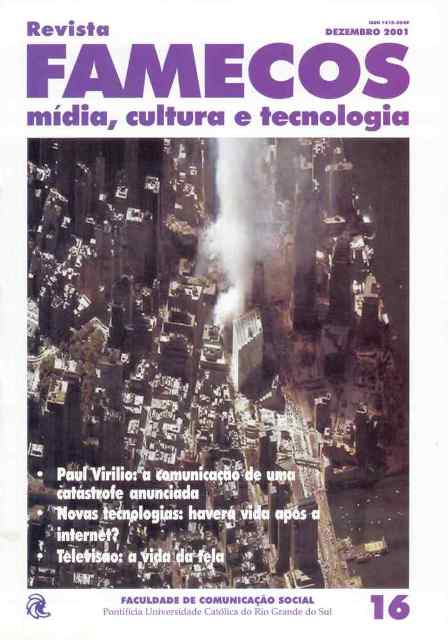Design and transgression
DOI:
https://doi.org/10.15448/1980-3729.2001.16.3141Keywords:
Communication, design, semioticsAbstract
The field of graphic communication design is undergoing major transformations, arising from the growing disrespect of its modernist canons, inherited from the Bauhaus and the Swiss School, and later consolidated by the International Style chain. Designer creations seen as postmodernists (such as April Greiman, Neville Brody, and David Carson, just to name the best known practitioners in the current setting) reject the a priori precepts of readability and functionality of those movements by cultivating intuition, hybridization , Disorder, improvisation and all kinds of graphic impertinences (fragments, 'juices','noises', defocalization). Seeking to understand the "return" to the creative anarchy that Futurists, Dadaists, Cubists and Expressionists had already exalted at the beginning of the 20th century, we present a brief summary of Julia Kristeva's psychoanalytic theory about the poetic language of the revolutionary movements of artistic creation.Downloads
References
BIELENBERG, John. Thinking About Communication. In: BIERUT, Michel e outros (eds). Looking Closer 2: Critical Writing on Graphic Design. New York: Allworth Press and American Institute of Graphic Arts, 1997.
CAUDURO, Flávio Vinicius. A retórica tipográfica do logocentrismo. In: III Congresso Brasileiro de Pesquisa e Desenvolvimento em Design, 1998, Rio de Janeiro. Anais... Rio de Janeiro: P&D, out. 1998.
EAGLETON, Terry. Literary Theory: An Introduction. Oxford: Basil Blackwell, 1983.
KRISTEVA, Julia. Le langage, cet inconnu, Points. Paris: Éditions du Seuil, 1969-1981.
_____. Revolution in Poetic Language, traduzido por Margaret Waller com uma introdução de Leon Roudiez. New York: Columbia University Press, 1974; Paris: Éditions du Seuil,1984.
_____. Desire in Language: A Semiotic Approach to Literature and Art , ed. por Leon S Roudiez e traduzido por T Gora, A Jardine, and L Roudiez. Oxford: Basil Blackwell; Paris: Editions du Seuil, 1980.
_____.The Semiotic Activityʼ, in Screen Reader 2: Cinema & Semiotics. London: The Society for Education in Film and Television, 1981.
_____. The Kristeva Reader, editado e com uma por Toril Moi. London: Basil Blackwell, 1986.
LIVINGSTON, Alan, & LIVINGSTON, Isabella. The Thames and Hudson Encyclopaedia of Graphic Design and Designers. London: Thames & Hudson, 1992.
LUPTON, Ellen, & MILLER, J. Abbott. Design Writing Research: Writing on Graphic Design. New York: Princeton Architectural Press, 1996.
MILLS, Mike. The (Layered) Vision Thing. In: BIERUT, Michel e outros (ed.). Looking Closer: Critical Writing on Graphic Design. New York: Allworth Press and American Institute of Graphic Arts, 1994.
POYNOR, Rick. Type and Deconstruction in the Digital Era. In: BIERUT, Michel e outros (ed.). Looking Closer: Critical Writing on Graphic Design. New York: Allworth Press and American Institute of Graphic Arts, 1994.
Downloads
Published
How to Cite
Issue
Section
License
Copyright
The submission of originals to Revista Famecos implies the transfer by the authors of the right for publication. Authors retain copyright and grant the journal right of first publication. If the authors wish to include the same data into another publication, they must cite Revista Famecos as the site of original publication.
Creative Commons License
Except where otherwise specified, material published in this journal is licensed under a Creative Commons Attribution 4.0 International license, which allows unrestricted use, distribution and reproduction in any medium, provided the original publication is correctly cited.






